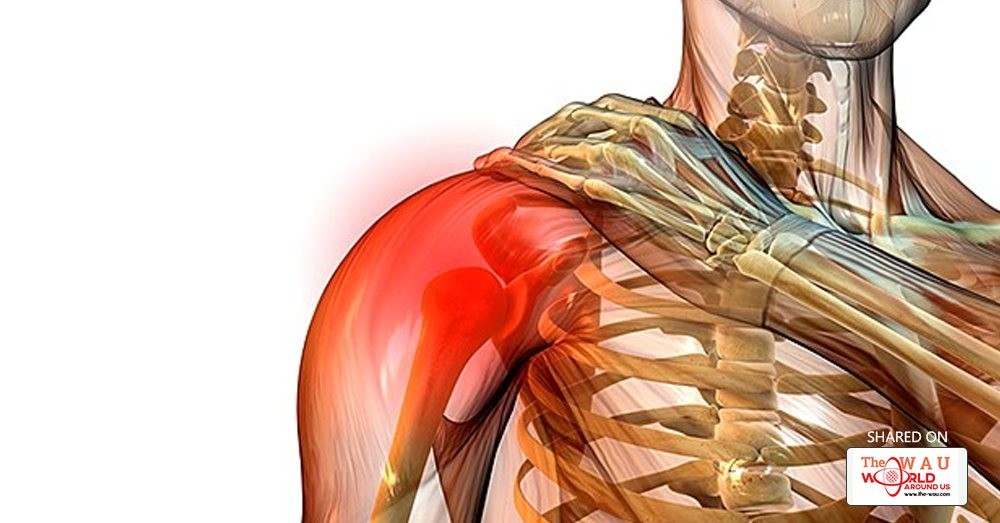No matter how small your waist is, without a mighty pair of well-sculpted, cannonball delts, it just won’t look great. Your shoulders are more than mere mirror muscles – they play a critical role in most upper-body exercises and work hard to stabilize your chest during push-ups and bench presses. Yet if you take a look around in most commercial gyms, you can see that most shoulders are weak or slopped forward. It’s a rather sad picture, but it’s not primarily caused by a lack of effort.
Most guys understand the importance of strong, healthy shoulders – it’s just that their shoulder training routines are incomplete or unbalanced. All athletes need to regularly train their shoulders with the right moves to improve their health, strength and size. Powerful shoulders will increase your performance on all lifts and ensure that your physique looks as impressive as it possibly can, so check out these 10 tips to learn how to get them!
#1. Keep Them Healthy
This is obviously a no-brainer, but it gets neglected way too often. If your shoulders are injured but you keep on training like you normally would, your performance will suffer and their health will deteriorate even further. Every exercise can be unbearably hard to do when the shoulders aren’t in top health.
Structural imbalance is the most common reason for shoulder injuries and that dreaded hunched look, and it usually means that the front part of the shoulders is overdeveloped while the rear muscles are too weak. Weak rotator cuff muscles is also a frequent problem for lifters.
For example, healthy shoulders are designed to do a press behind the back without any problems. If you can’t do this, you have some issues. Wall slides are another good test for shoulder health. Stand with your back against the wall and bring your arms at shoulder height while bending the elbows about 90 degrees. Move your arms up and down – can you feel your shoulder blades moving downward?
If you notice that your arms are coming forward, that’s a clear sign that your shoulder complex is too stiff. If you want to have healthy shoulders and continue making mass gains, you need to take care of this before returning to your regular routine. Never neglect shoulder pain.
#2. Improve Flexibility & Mobility
The shoulders figure into every upper body exercise – bench presses, overhead presses, dips, push-ups and any other move that involves your arms depend on healthy shoulders and good scapular function. Scapular stability is the foundation for strong, flexible, healthy shoulders and without a strong scapula you can’t expect neither good performance nor injury-free training sessions.
Flexible shoulders will increase your strength and decrease the amount of stress on your bones, ligaments and joints, so you really need to work on this issue. Stretching exercises can help you keep your muscles moving freely and your joints moving through a full range of motion. Begin with towel stretches: grab a towel with both hands and try to bring it over your head behind your body, while keeping the arms extended. Do 3 sets of 20 every day.
#3. Check Your Elbows
You should always make sure to have your elbows directly under the bar so that you can place more tension on the delts right from the start. Always keep them in a neutral position and prevent them from bending or drifting forward. Also, when performing lateral raises, focus on moving the elbows before the wrists.
To do lateral raises correctly, you need to create a very slight bend in the elbows and then maintain it throughout the set. If you start opening and closing at the elbows, you will undermine the delt stimulation you’re trying to achieve. That being said, another common mistake is to wave the weights up and down without raising your elbows out to their sides, which basically cancels most of the delt-developing benefits of the movement. Instead of doing that, always “lead with your elbows” so they can go through their full range of motion.
#4. Train the Cuff
The rotator cuff is a muscle group that deserves special attention because it’s crucial for any athlete in any sport. Namely, these muscles – the supraspinatus, infraspinatus, subscapularis and teres minor – work together to provide muscular stability of the shoulder joint and training them properly will assist in preventing potentially debilitating shoulder injuries.
Unfortunately, most lifters only realize that they exist after they injure them. But it doesn’t have to be like that for you! Here’s how to check on your rotator cuff muscles: lay sideways on a bench and rotate a dumbbell upward against your hip. You should be able to move about 8-10% of your incline bench weight. If you’re weaker than that, it’s time to work on strengthening your rotator cuff by performing inwards and outwards rotations at least once per week.
...[ Continue to next page ]
Share This Post















